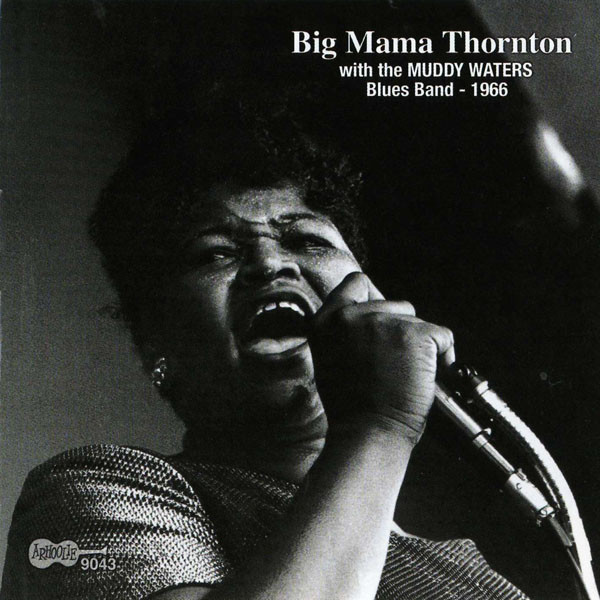
BIG MAMA THORNTON December 11, 1926 – July 25, 1984
RECOMMENDED ALBUMS: BIG MAMA THORNTON IN EURPOE (Arhoolie), BIG MAMA THORNTON AND THE MUDDY WATERS BLUES BAND (Arhoolie), THE ORIGINAL HOUND DOG (Ace Records)
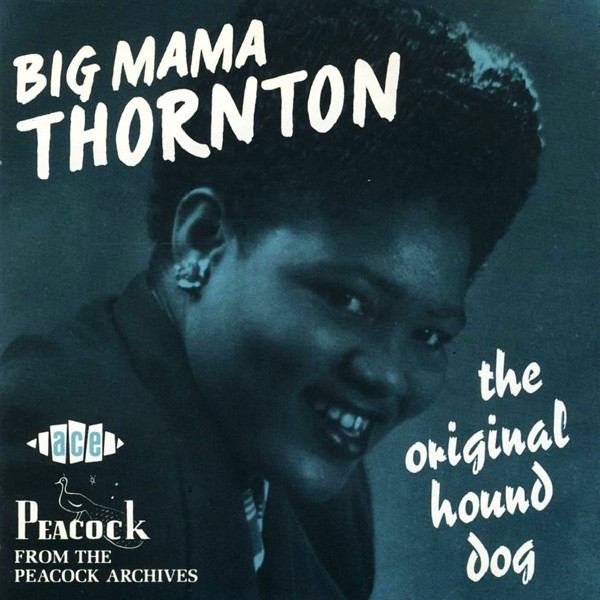
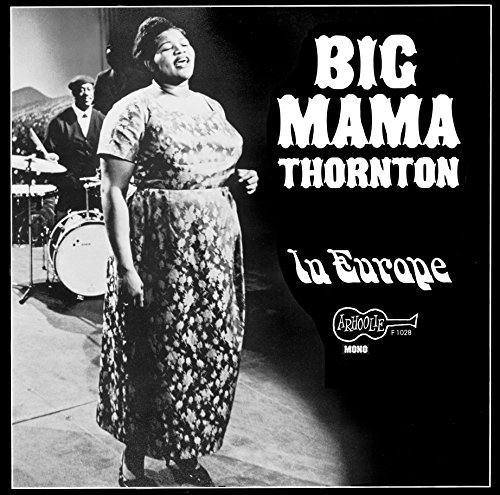
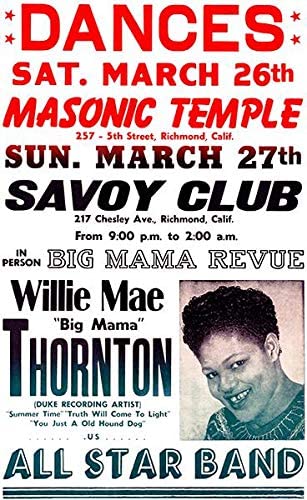


RECOMMENDED ALBUMS: BIG MAMA THORNTON IN EURPOE (Arhoolie), BIG MAMA THORNTON AND THE MUDDY WATERS BLUES BAND (Arhoolie), THE ORIGINAL HOUND DOG (Ace Records)



Born in Arkansas in 1915 Sister Rosetta Tharpe influenced Rock and Popular music more then most people know. A young Little Richard got his start by opening for her before anybody knew who he was. Elvis, Johnny Cash, and Bob Dylan all cite Sister Rosetta as a major influence, and during her heyday she performed for stadium sized crowds all over the world. In short, Sister Rosetta was a rockstar before Rock n’ Roll even existed.
Few people were better at discovering musical talent in Louisiana during the 1950’s and 60’s then J.D. Miller and Eddie Shuler. Instrumental in bringing styles such as Zydeco, Cajun, and Swamp Pop to the ears of the world, they each made their mark by recording and producing local unknown talent. Miller recorded the artists he discovered then usually sold the tapes to other record labels while Shuler recorded and released music on his own Goldband label. Now, thanks to the fine people at ACE Records, there are TWO new excellent compilations that focus on the Blues recordings produced by Miller and Shuler.
Part of ACE’s “By The Bayou” series, these discs, entitled Bluesin’ By The Bayou and Bluesin’ By The Bayou: Rough & Tough, are both supreme examples of the Louisiana Blues scene during the 50’s and 60’s. Sometimes known as “Swamp Blues” the music on these recordings is a mix of down-home Country Blues with a few touches of R&B, Zydeco, and Cajun Music thrown in for good measure. These recordings are essential for any Blues or Roots Music fan’s record collection. This is as greasy as it gets!
Some of the artists featured on Bluesin’ On The Bayou
SLIM HARPO
Born in Baton Rouge, Louisiana, Slim Harpo was one of the most successful and best known of all Swamp Blues artists. His songs “I’m A King Bee” (1957) and “Shake Your Hips” (1961) were both covered by The Rolling Stones and he had a number one hit in 1966 with “Baby Scratch My Back”. Included on Bluesin’ By The Bayou: Rough and Tough are his single “My Little Queen Bee”, an answer to his first hit “King Bee”, and a cover of Lonesome Sundown’s “Bought Me A Ticket”
LONESOME SUNDOWN
Lonesome Sundown was born Cornelius Green in 1931 on a plantation in Donaldsville, Louisiana. Well versed in a variety of musical styles, Lonesome Sundown’s music ranged from down-home Blues to Country to Roll-licking R&B. He was never a household name but nevertheless was responsible for some of the most exciting music to come out of Louisiana in the 50’s and 60’s. Included on Bluesin’ By The Bayou: Rough and Tough are romping versions of his songs “I’m Gonna Stick To You Baby” and “If Anybody Asks You”. Both songs are essential listening for any Blues fan.
LIGHTNIN’ SLIM
One of the most important and influential bluesmen to ever come out of Louisiana, Lightnin’ Slim was actually born in St. Louis, Missouri. He moved to Louisiana when he was a teenager and soon picked up the guitar and began playing in clubs. In 1954 he recorded “Bad Luck Blues” with J.D. Miller and regularly performed with fellow Louisiana bluesmen Lonesome Sundown, Lazy Lester, and Slim Harpo. Included here in this collection is his song “Trip To Chicago” which talks about the groups “adventure” to play a gig in the Windy City! Fellow Louisiana bluesman Buddy Guy credits Lightnin’ Slim as one of his biggest influences.
LAZY LESTER
A talented multi-instrumentalist, Lazy Lester performed on many recordings produced by J.D. Miller as both a front-man and backup musician. His first major his was the his 1958 release “I’m A Lover Not A Fighter”. Originally written by J.D. Miller, this song put Lester on the map and was coupled with the b-side “Sugar Coated Love”. Still an excellent performer to this day, he still tours nationally and is a favorite at Blues festivals. He was inducted into the Blues Hall Of Fame in 2012. UPDATE 2018: Sadly Lester passed away on August 28, 2018. He was 85
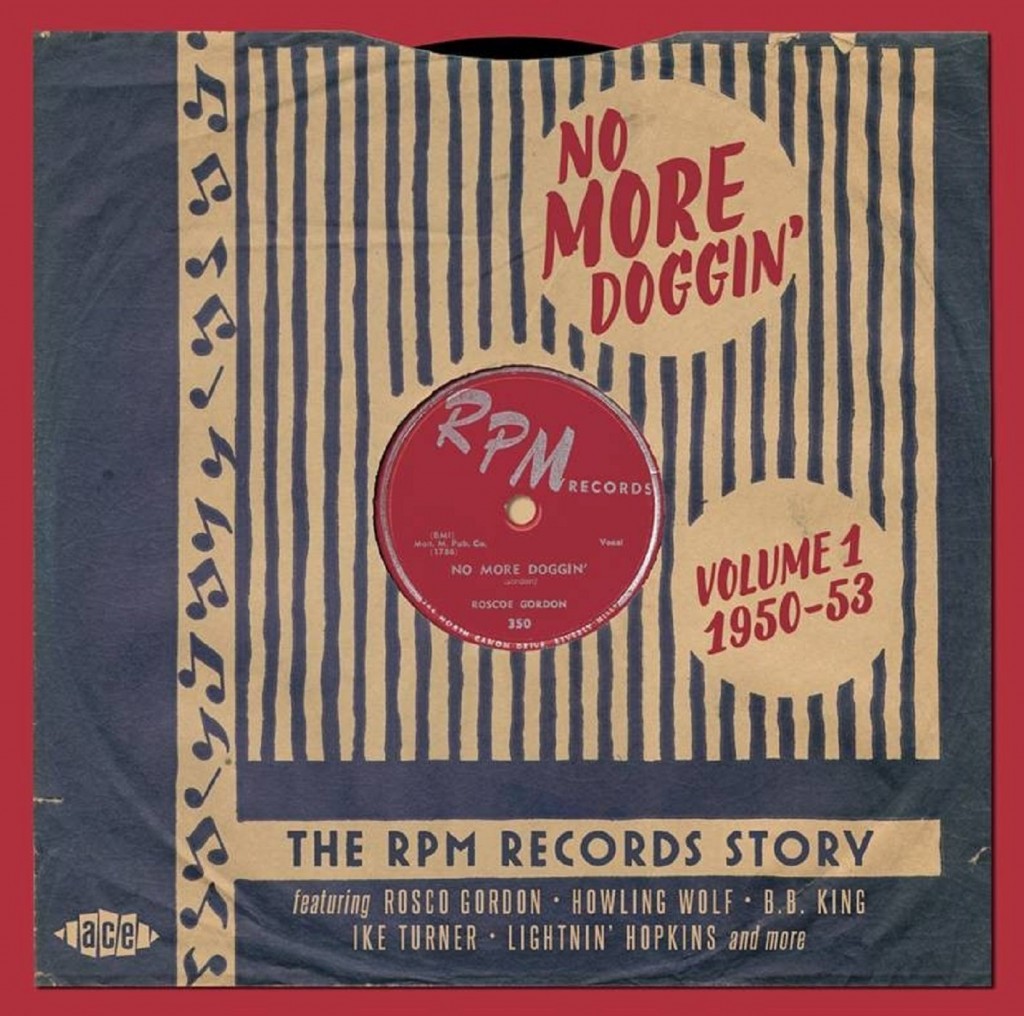 Full of Jump Blues, early R&B, and down-home Country Blues, the double-disc collection No More Doggin’ The RPM Records Story Vol. 1 might be one of the best introductions to early 50’s blues ever. Compiled by the good folks at ACE Records, this collection covers the early years of RPM Records and features well know artists like B.B. King, Howlin’ Wolf, and Lightnin’ Hopkins.
Full of Jump Blues, early R&B, and down-home Country Blues, the double-disc collection No More Doggin’ The RPM Records Story Vol. 1 might be one of the best introductions to early 50’s blues ever. Compiled by the good folks at ACE Records, this collection covers the early years of RPM Records and features well know artists like B.B. King, Howlin’ Wolf, and Lightnin’ Hopkins.
Started in 1950 by the Bihari Brothers, RPM was meant to be a subsidiary of the Bihari’s very popular label Modern Records. After initially having lots of success with Modern, the Bihari’s began having trouble getting their records played on the radio due to stations not wanting to play too many sides from any one label. So in order to get their product on the airwaves the Bihari’s started a number of subsidiary labels. Probably the most popular of Modern’s subsidiary labels, RPM introduced the world to a Memphis radio DJ by the name of Riley B. King. Eventually known as “B.B. King”, Riley came to the attention of the Bihari Brothers thanks to their working relationship with Memphis talent scout/producer Sam Phillips. Phillips at the time was recording local artists with his Memphis Recording Service then sending the masters to labels like Modern and Chess. Trough their relationship with Phillips, the Bihari’s got hooked up with some of the best talent in Memphis. Unfortunately their relationship ended when Phillips and the Bihari’s had a disagreement over a B.B. King session and went their separate ways. Fed up with feeding product he recorded to other labels, Phillips then decided to start his own label, Sun Records. As for Modern/RPM, even without the help of Phillips the label still went on to produce many more hits, including B.B. King’s breakthrough hit record Three O’Clock Blues.
No More Doggin’ The RPM Records Story Vol. 1 starts off with the Dixieland-style track “Alabama Bound”. Sung by Adele Francis, this tune was RPM’s first release in 1950. Other stand out tracks are Sonny Blair’s down-and-out blues ballad “Glad To Be Back Home”, B.B. King’s “Other Night Blues, and Howlin’ Wolf’s “Riding In The Moonlight”. My personal favorite recordings on this collection are the Lightnin’ Hopkins tracks. Excellent versions of “Bad Luck and Trouble” and “Another Fool In Town” showcase Hopkins at his bluesy best, while “Jake Head Boogie” shows that he also could ROCK when he wanted to. Another nice surprise on this collection is the tune “It’s Time For Lovin’ To Be Done”. Performed by Detroit Bluesman Little Eddie Kirkland, the song features uncredited backing vocals by the great John Lee Hooker!
As usual the folks at ACE left no stone unturned when putting this collection together. Included in this collection is a nice history of RMP records as well as a few words on all the performers. All of the albums 52 tracks sound crisp and clear thanks to the extra care shown by the folks who did the remastering. If you want to hear where Rock N’ Roll really began this collection is for you.
James Govan might be the best singer you’ve never heard of. A staple of the local music scene for many years, James Govan was born in McComb, Mississippi in 1949.  His first big break came in 1967 when his talent caught the attention of songwriter/producer George Jackson. Jackson, who at the time was a songwriter for the legendary Muscle Shoals record label FAME, immediately recognized there was something special in James’ voice and decided to introduced him to FAME Records owner Rick Hall.  Hall also heard potential and soon after their meeting James starting recording sides for FAME. While the material was strong and James would go on to recorded a number of songs for FAME between 1969 and 1972  the label only released a few of them as singles. In fact, most of the music went unreleased until 2013 when the good people at ACE Records complied and released James Govan Wanted: The FAME Recordings. Even though none of these recordings were big hits it’s still an amazing body of work that’s essential to any Soul music fan’s record collection.
After his time with FAME, James went back to Beale Street where he became a regular performer in blues clubs. He released one album in 1982 which went nowhere and after that didn’t release any new music until the 1990’s. He saw some success again in 1993 when his performance at the Porretta Soul Festival in Italy made him a popular performer in Europe. He then released another album in 1996 but like his previous albums, it failed to draw any attention. James may have never had that “big hit record” but he always delivered the good live. He was a regular performer at the famous Run-Boogie Cafe in Memphis for over 20 years.
Sadly James passed on July 18, 2014. Fortunately his amazing talent will live on through his recordings and hopefully in time make James Govan into a household name. You can purchase James Govan Wanted: The FAME Recordings here